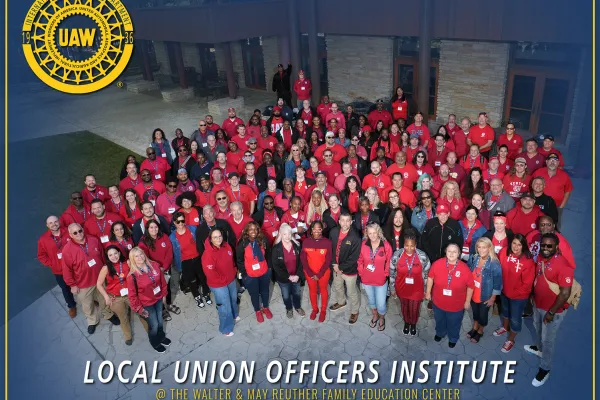
AUTOWORKERS ACROSS THE U.S. ARE JOINING THE UAW. ARE YOU READY TO STAND UP AND WIN YOUR FAIR SHARE?
Volkswagen workers just made history and voted UAW YES! It’s time for autoworkers to win a better life at Toyota, Honda, Hyundai, Tesla, Nissan, BMW, Mercedes-Benz, Subaru, Mazda, Rivian, Lucid, Volvo and beyond.



We're Fighting For You
Upcoming Events
UAW Blog
-
UAW Region 4, Local 2320 Stand in Solidarity with Immigrant Justice Workers United Unit
UAW Region 4, Local 2320 Immigrant Justice Workers United Unit gathered in office to deliver a letter in solidarity to the Executive Director, requesting that our Coordinators, Legal Fellows, and additional staff be recognized as members of UAW National Organization of Legal Services Workers (NOLSW). A supermajority of the workers has signed Union cards and […]
The post UAW Region 4, Local 2320 Stand in Solidarity with Immigrant Justice Workers United Unit appeared first on UAW | United Automobile, Aerospace and Agricultural Implement Workers of America.
-
UAW Region 2B Local 2192 Lorain County Public Workers
Lorain County Public Workers are ready to STAND UP!
The post UAW Region 2B Local 2192 Lorain County Public Workers appeared first on UAW | United Automobile, Aerospace and Agricultural Implement Workers of America.
-
UAW Region 1D, Local 2290 Kalamazoo County Dispatch Authority Ratifies Contact at 100%
Congratulations to UAW Region 1D, Local 2290 Kalamazoo County Dispatch Authority, ratifying their contract at 100%. The showing of solidarity that proves when our essential public sector workers stand together, they can secure a contact with the respect and recognition they deserve.
The post UAW Region 1D, Local 2290 Kalamazoo County Dispatch Authority Ratifies Contact at 100% appeared first on UAW | United Automobile, Aerospace and Agricultural Implement Workers of America.
-
UAW Statement on the Michigan Senate’s Unanimous, Bipartisan Passage of SB 700
The UAW applauds yesterday’s unanimous, bipartisan vote in the Michigan Senate to pass SB 700 and fix a real problem that affects hundreds of thousands of Michigan workers, including thousands of UAW members.
The post UAW Statement on the Michigan Senate’s Unanimous, Bipartisan Passage of SB 700 appeared first on UAW | United Automobile, Aerospace and Agricultural Implement Workers of America.
-
UAW Agricultural Implement Workers Demand Action from DC on Plant Closures in New Video
In a new video, a delegation of UAW agricultural implement workers from John Deere and Case New Holland speak out in Washington, DC against plant closures, layoffs, and the attack on workers throughout this sector.
The post UAW Agricultural Implement Workers Demand Action from DC on Plant Closures in New Video appeared first on UAW | United Automobile, Aerospace and Agricultural Implement Workers of America.








